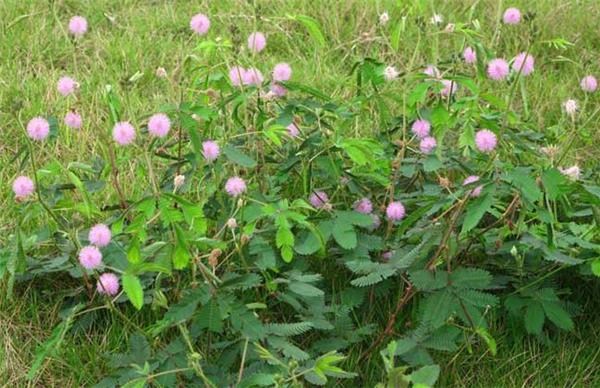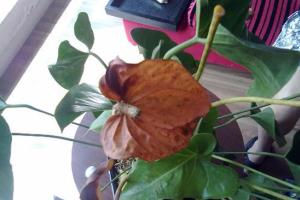How to raise mimosa the culture method of mimosa
Mimosa is different from other plants. When touched by people, its petiole is drooping and its small leaves are closed, so people understand it as "shy", so it is called inductive grass, drinking grass, mimosa, mimosa and ugly grass (Cantonese). How to raise the mimosa? The following is the arrangement done by the editor. I hope it will be useful to you.

The characteristics of mimosa:
1. The most important feature of mimosa is that when it is stimulated (such as touching), the leaves of mimosa will contract and come together. If the stimulus is strong, the stimulus will be quickly transmitted to the adjacent leaflets, and even to the entire compound leaflet, causing the petiole to droop. If the stimulation intensity is larger, it can even make the leaflets of the whole plant close and the compound leaves droop. But after a period of time, the original state can be restored. Mimosa also responds quickly to vibration, which begins to respond after 0.1 s of stimulation and is completed in a few seconds.
2. Mimosa also closes the leaflets and the petiole droops in the dark, and in the daytime, when some of the leaflets are shaken, they also close in pairs. It is more sensitive when the light is weak, and the water in the leaf pillow usually supports the leaf, but when it is stimulated by an external force, the water in the leaf pillow will immediately flow elsewhere, closing the leaves of the mimosa. In addition, it automatically contracts at night (that is, sleep exercise). This uniqueness is the source of the mimosa name and nickname.
3. Because of its strong vitality and messy growth, mimosa is classified as grass in many places, but in fact it will blossom. Mimosa blossoms from July to October every year, but its flowering period is so short that it dies after flowering for less than two days. The flower is pink, the head is spherical and shaped like a fluffy ball. It will also bear pods after flowering, and the fruit is flat and round.
4. The flower language of mimosa is sensitive, shy and polite. Gently touching the leaves of this plant will immediately close and droop, even if a gust of wind blows, just like a shy girl, so its flower language is-shy. The person who is blessed by this kind of flower is very shy and timid, and is very afraid of life. The feeling is particularly sharp, and the self-esteem is strong.

How to raise mimosa:
Cultivated soil
When sowing mimosa, it can be directly broadcast in a small pot, or the seedlings can be cultivated in a shallow pot. The cultivated soil sown by mimosa had better be mixed with rotten leaf soil, garden soil and fine yellow sand according to the proportion of 2:3:5. When sowing, put an appropriate amount of culture soil in the basin, smooth and compact, sprinkle water with a spray pot, and sow mimosa into the soil immediately after all the water permeates. If it is a small pot direct broadcast, then each pot is only allowed to sow 1-2 seeds. If the seedlings are raised in a shallow basin, the seedlings will be sown on demand at a distance of 2 "m × 2 m. It is appropriate to cover the seeds with 3-5 cm of soil after sowing. Finally, cover the basin with glass or plastic plastic wrap to moisturize, and place the basin at 20 ℃.
Seedling emergence and breeding
When the mimosa in the basin emerges, remove the mulch from the basin and gradually expose it to the sun. When its seedlings grow to 3 centimeters, the seedlings in the shallow pot can be divided and transplanted. Transplant with soil when dividing seedlings, so that the survival rate is relatively high. The seedlings that have just come into the pot should be watered in time, watered thoroughly and placed in a semi-shaded place. Wait for the seedlings to slow down and then move to a sunny place. If it is a mimosa live in a small basin, you can directly put it in a sunny place to grow.
Fertilization and watering
Generally, from April to May every year, the seedling pot of mimosa should be moved out of the outdoor for breeding, and the pot soil should be watered in time to keep the soil moist. When its seedlings grow to four leaves, it can be fertilized and liquid fertilizer should be used when applying fertilizer. No, it is usually 7-10 days to apply mature light liquid fertilizer. Wait until the mimosa grows up, you can change the pot, but the pot can not be too large, generally planted to 15-20 meters of medium flowerpot on it.
Reproduction method
Because mimosa is a taproot plant, its fibrous roots are very few, so it is best to use sowing and reproduction when planting, and it is best to use the method of direct seeding to breed, so as not to hurt his roots when transplanting. If transplanting is needed, transplant should be carried out at the seedling stage. Mimosa is an annual plant, so it is sown in early spring.
After reading the introduction of the editor, now you know how to raise the mimosa. I hope it will help your planting!
- Prev

How to find out the cause of Anthurium andraeanum flower heart blackening? symptomatic nursing.
How to find out the cause of Anthurium andraeanum flower heart blackening? symptomatic nursing.
- Next

What are the effects and functions of Cornus officinalis
What are the effects and functions of Cornus officinalis
Related
- Wuhan Hospital Iron Tree Blooming Result Was Instantly Frightened by the Gardener Master
- Which variety of camellia is the most fragrant and best? Which one do you like best?
- What is the small blue coat, the breeding methods and matters needing attention of the succulent plant
- Dormancy time and maintenance management of succulent plants during dormancy
- Minas succulent how to raise, Minas succulent plant pictures
- What are the varieties of winter succulent plants
- How to raise succulent plants in twelve rolls? let's take a look at some experience of breeding twelve rolls.
- Attention should be paid to water control for succulent plants during dormant period (winter and summer)
- Watering experience of twelve rolls of succulent plants
- Techniques for fertilizing succulent plants. An article will let you know how to fertilize succulent plants.

